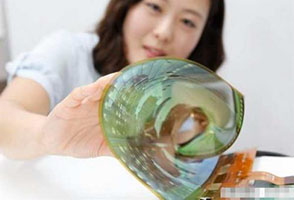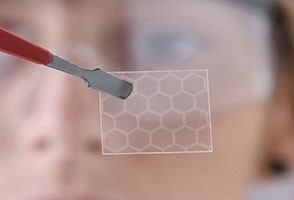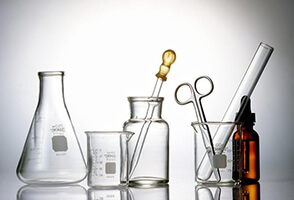Nano Silver: a Brand New Name-Named For Its Results
2021-03-09
Nanosilver is not a new discovery for nanotechnologists-a new EMPA study shows that it has actually been used in a series of products for more than 100 years. The antibacterial effect of Small Silver Particles (later called "colloidal silver") has been known since the beginning of use.
At present, many nanomaterials have actually become the focus of attention. In particular, Silver Nanoparticles are being thoroughly examined by scientists and regulatory agencies. The assumption behind this interest is that they are dealing with a whole new kind of problem.
However, in a paper recently published in the journal Environmental Science and Innovation, EMPA researcher Bernd Nowack, along with Harald Krug and Murray Heights of Haiiq, believe that silver nanoparticles are by no means a 21st century exploration. Silver particles with a particle size of 7-9nm have been discovered as early as 1889. They are used as drugs or biological fungicides to prevent the growth of microorganisms on surfaces, such as antibacterial water filters or algae removal in swimming pools.
The material is always the same
Nanoparticles were called "colloidal silver" at the time, but their meaning is the same as today-small silver fragments. "However, nano doesn't mean anything new or dangerous," Bernd Nowack said.
When "colloidal silver" appeared on the market in large numbers in the 1920s, it had actually become the subject of many studies and was properly regulated by the authorities. Even in those days, the importance of exploring nanoparticles and how they work was recognized.
"This is not to say that the possible negative effects of nanoparticles on humans and the environment need to be minimized or ignored," Novak said. It is important to accurately describe the product characteristics of nanosilver in detail, rather than just trusting the doubts and reservations surrounding the product without any doubt.
The mode of action of nano silver is different from that of silver.
The term "nanoparticle" must be understood as a particle with a size of less than 100 nanometers. Due to the small size of the nanoparticles, they have different properties from the larger particles of the same product. For example, nanoparticles have a larger surface area in a certain amount, so they are usually more sensitive than bulk materials. In addition, a small amount of nano-silver produces even more silver ions than strong silver. These silver ions are toxic to microorganisms. Whether nano-silver poses a threat to humans and the environment is the subject of many current studies.
Nano silver in sewage treatment plants
There are currently thousands of products containing nano-silver on the market. Examples include cosmetics, food packaging materials, disinfectants, detergents, and—especially—antibacterial socks and underwear. There are 320 types of nanosilver in use worldwide each year, some of which are released into wastewater, which enters the natural water circulation system. The impact of sun debris on rivers, soil, and animals living in them is unclear.
Bernd Nowack published an article in the journal Scientific Research on the impact of current research on silver nanoparticles in sewer treatment plants. More than 90% of the residues still exist in the sewage sludge in the form of silver sulfide. Silver sulfide is an insoluble compound whose toxicity is many orders of magnitude less than that of the supplied silver ions. Obviously, it does not matter whether the initial type of silver in the wastewater is metal nanoparticles, or silver ions in the solution or precipitated insoluble silver salts.
Novak said: "In terms of ecological impact, Nano-Silver in consumer products seems to be no different from other silver, but is just a small issue for the environment."
Nevertheless, the free silver in the treated water discharged from the sewage treatment plant and the silver sulfide in the pure natural water still need to be cleaned up. Is it safe and non-reactive, or will it turn into several other forms of silver?
At present, many nanomaterials have actually become the focus of attention. In particular, Silver Nanoparticles are being thoroughly examined by scientists and regulatory agencies. The assumption behind this interest is that they are dealing with a whole new kind of problem.
However, in a paper recently published in the journal Environmental Science and Innovation, EMPA researcher Bernd Nowack, along with Harald Krug and Murray Heights of Haiiq, believe that silver nanoparticles are by no means a 21st century exploration. Silver particles with a particle size of 7-9nm have been discovered as early as 1889. They are used as drugs or biological fungicides to prevent the growth of microorganisms on surfaces, such as antibacterial water filters or algae removal in swimming pools.
The material is always the same
Nanoparticles were called "colloidal silver" at the time, but their meaning is the same as today-small silver fragments. "However, nano doesn't mean anything new or dangerous," Bernd Nowack said.
When "colloidal silver" appeared on the market in large numbers in the 1920s, it had actually become the subject of many studies and was properly regulated by the authorities. Even in those days, the importance of exploring nanoparticles and how they work was recognized.
"This is not to say that the possible negative effects of nanoparticles on humans and the environment need to be minimized or ignored," Novak said. It is important to accurately describe the product characteristics of nanosilver in detail, rather than just trusting the doubts and reservations surrounding the product without any doubt.
The mode of action of nano silver is different from that of silver.
The term "nanoparticle" must be understood as a particle with a size of less than 100 nanometers. Due to the small size of the nanoparticles, they have different properties from the larger particles of the same product. For example, nanoparticles have a larger surface area in a certain amount, so they are usually more sensitive than bulk materials. In addition, a small amount of nano-silver produces even more silver ions than strong silver. These silver ions are toxic to microorganisms. Whether nano-silver poses a threat to humans and the environment is the subject of many current studies.
Nano silver in sewage treatment plants
There are currently thousands of products containing nano-silver on the market. Examples include cosmetics, food packaging materials, disinfectants, detergents, and—especially—antibacterial socks and underwear. There are 320 types of nanosilver in use worldwide each year, some of which are released into wastewater, which enters the natural water circulation system. The impact of sun debris on rivers, soil, and animals living in them is unclear.
Bernd Nowack published an article in the journal Scientific Research on the impact of current research on silver nanoparticles in sewer treatment plants. More than 90% of the residues still exist in the sewage sludge in the form of silver sulfide. Silver sulfide is an insoluble compound whose toxicity is many orders of magnitude less than that of the supplied silver ions. Obviously, it does not matter whether the initial type of silver in the wastewater is metal nanoparticles, or silver ions in the solution or precipitated insoluble silver salts.
Novak said: "In terms of ecological impact, Nano-Silver in consumer products seems to be no different from other silver, but is just a small issue for the environment."
Nevertheless, the free silver in the treated water discharged from the sewage treatment plant and the silver sulfide in the pure natural water still need to be cleaned up. Is it safe and non-reactive, or will it turn into several other forms of silver?




